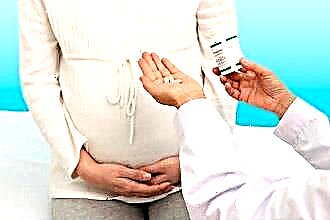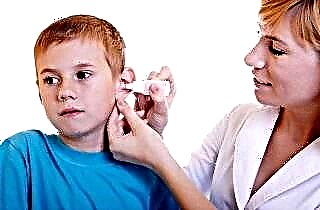Each of us can face many problems from the cardiovascular system. One of the most common diseases is myocardial infarction. But even with the modern level of development of medicine, it is not always possible to diagnose pathology. There are "dumb" zones of the heart that cannot be visualized, and the posterior wall of the left ventricle belongs to them. I would like to talk about the peculiarities of the course of a vascular catastrophe in this anatomical segment in an article.
Briefly about anatomy and physiology
First, let's try to figure out what the posterior wall of the left ventricle is. The heart is a hollow muscular organ that circulates blood throughout the body. It consists of 4 chambers: 2 ventricles and 2 atria. The main component of the muscle pump is the left ventricle, which supplies oxygen-rich blood to all tissues of the body.
The thickness of the left ventricular myocardium is approximately 2-3 times greater than other parts of the organ and averages from 11 to 14 mm. Therefore, due to its large size, this part of the heart requires a larger volume of blood, which it receives through the right coronary artery and its circumflex branch. Any damage to the vessels bringing fresh oxygen quickly affects the functional activity and can lead to the death of cardiomyocytes.
In view of the features described above, myocardial infarction in 99.9% of cases affects exclusively the left ventricle.
About 10-15% of vascular accidents occur on the posterior wall, which, for the convenience of doctors, is divided into two main sections:
- diaphragmatic;
- basal.
The latest research work of cardiac surgeons, as well as my personal experience, made it possible to make this problem more urgent. If myocardial infarction of the posterior wall of the left ventricle develops, then it is practically invisible on the ECG, often hiding under the guise of angina pectoris. As a result, the patient does not receive the necessary complex of therapeutic measures. The cells of the organ continue to die, there are many adverse consequences in the future.
Fortunately, in 60-70% of cases, an infarction of the posterior heart wall is combined with necrosis of adjacent areas (posterior inferior, posterior septal, posterolateral), which is clearly reflected in the electrocardiogram curve.
Causes
In fact, there is a huge list of factors leading to damage to the coronary arteries, but the most significant are:
- Atherosclerosis. It occurs in most people over 60 years of age against the background of lipid metabolism disorders (increased total cholesterol, LDL and TAG, decreased HDL). As a result of the formation of pathological overlays on the walls of blood vessels, their obstruction occurs. The condition is further aggravated by the sedimentation of thrombotic masses. I have not met patients with a cardiological profile without signs of this disease.
- Migration of blood clots from distant sites. A similar phenomenon is most typical for people suffering from varicose veins of the lower extremities, much less common against the background of prolonged physical inactivity (the course of severe somatic diseases) in the absence of antiplatelet therapy. As a rule, middle-aged and elderly people generally do not pay attention to changes in the venous bed in the legs. However, young girls who are worried about their attractiveness care a lot more about it.
- Vascular spasm. It can take place against the background of disorders of the central nervous system (neuroses, systematic stress).
Factors such as the following predispose to the development of myocardial infarction:
- arterial hypertension;
- obesity (increased BMI over 30 kg / m22);
- physical inactivity (WHO recommends taking at least 8,000 steps daily);
- lipid profile disorders;
- the presence of bad habits (smoking, systematic use of alcoholic beverages and drugs);
- male gender;
- age from 45 years.
You can independently assess the presence of risk factors. If there is at least 3 of the above, then the likelihood of a fatal complication from the cardiovascular system increases 2.5 times. It's not too late to change everything and secure a healthy future for yourself.
Clinical manifestations
It is quite possible to suspect an impending posterior myocardial infarction and other vascular complications (for example, a stroke or hemorrhage in the eyeball) in a domestic environment.
As a rule, they are preceded by conditions such as:
- hypertensive crisis;
- an attack of unstable angina pectoris (with a history of ischemic heart disease);
- episodes of arrhythmias;
- changes in general condition and behavior (sudden sharp headaches, increased sweating, weakness, chills).
Pain
Soreness and discomfort behind the breastbone is the only thing that unites all people with developed myocardial infarction.
Pain has specific characteristics:
- duration over 15 minutes;
- localization behind the sternum;
- lack of effect from nitroglycerin and other nitrates;
- the possibility of irradiation to the left shoulder blade, shoulder, forearm and little finger.
It is extremely rare that a "silent picture" is revealed when pain is completely absent, but only weakness and increased sweating are observed.
Expert advice
An important sign is the duration of pain. Stable exertional angina is never so long. If you have discomfort behind the sternum for more than 15 minutes, urgently call a team of doctors, since the heart cells are already experiencing acute hypoxia, which may soon turn into an irreversible stage (necrosis).
Violation of the functional activity of the heart
In the posterior wall of the left ventricle, important pathways do not pass, therefore, rhythm disturbances are not characteristic, but sometimes they occur (in my memory, such situations have never been observed). By turning off significant masses of the myocardium from the work, phenomena of stagnation from the small (shortness of breath, cough with blood streaks) and large (edema in the legs and in the body cavities, an increase in the size of the liver, pallor of the skin with a bluish tint in the distal parts) circles blood circulation.
Diagnostics
The fundamental method of diagnosis is electrocardiography.
Acute basal isolated myocardial infarction generally cannot be detected under any conditions. The defeat of the diaphragmatic part of the posterior wall can be recognized by indirect signs. Changes in the ECG characteristic of the stages of vascular pathology (acute, acute, subacute, scarring) are absent.
So, the doctor will suspect the presence of a heart attack according to the following criteria:
- increase in the amplitude of the R wave in V1 and V2;
- decrease in the depth of the S waves in 1 and 2 chest leads;
- the voltage of the S and R waves in the first two leads is the same;
- bifurcation of the R wave (often diagnosed as a right bundle branch block);
- lifting the T wave in V1-V
The national guidelines for physicians describe options for small-focal diaphragmatic infarction with the appearance of a characteristic pathological Q wave and elevation of the ST segment. However, in personal practice, it was never possible to record such changes on the cardiogram, although the clinic was present.
Instrumental diagnostics
Echo-KG is used to establish dysfunction of the heart wall. Ultrasound waves with high accuracy reveal areas of myocardial hypo- or akinesia, making it possible to suspect necrotic or already cicatricial transformations in them.
Coronography is widely used to locate the site of obstruction of the coronary arteries.After the contrast agent is injected, a series of X-ray images are taken, in which the narrowing areas are clearly visible.
Laboratory diagnostics
To confirm the diagnosis, the following can be involved:
- Complete blood count (increased leukocyte count and ESR);
- Troponin test - increases in the presence of necrosis of the heart or any skeletal muscle. The lesion of the posterior wall is always insignificant, and therefore the troponin level may not increase, leading to diagnostic errors.
Both methods allow to confirm myocardial infarction only after 6-7 hours. And the golden window, through which the cause of occlusion can be eliminated and "barely alive" cardiomyocytes can be restored, is only 3 hours. An extremely difficult choice, isn't it? Echo-KG and other highly informative methods (MRI) are not available at all medical institutions.
Emergency help
If you happen to meet a person with myocardial infarction, then the procedure will be as follows:
- Call an ambulance immediately.
- Lay the patient on the bed, lifting the head end of the body.
- Provide fresh air (open windows).
- Ease breathing (remove tight outer clothing).
- Every 5 minutes, give any nitro drug ("Nitroglycerin") under the tongue, along the way measuring blood pressure and heart rate before a new dose. If your heart rate rises above 100 beats per minute or your blood pressure falls below 100/60 mm. rt. Art. therapy is stopped.
- Suggest to ingest "Acetylsalicylic acid" (0.3 g).
Attempts to eliminate coronary pain with conventional analgesics should not be carried out. Can a pain reliever prevent heart cell necrosis? In addition, the clinical picture may be erased, which will complicate the diagnosis.
Treatment
Immediately after the diagnosis is made, emergency therapy is carried out with the following drugs:
| Name of the medication | Dose |
|---|---|
Aspirin (if not given previously) | 0,3 |
Metoprolol | 0,0250 |
Morphine 1% | 1 ml |
Heparin | Up to 4000 units |
Clopidogrel | 0,3 |
Oxygen therapy (40% O2) | Until signs of heart failure are eliminated |
The patient is urgently hospitalized in the intensive care unit of the cardiological profile. Systemic or local thrombolysis is performed (if less than 6 hours have passed since the onset of the disease). In the long term, stenting or coronary artery bypass grafting is indicated.
The main areas of therapy are as follows:
- Prevention of rhythm disturbances. Beta-blockers are used (Metoprolol, Carvedilol, Bisoprolol), calcium channel antagonists (Amlodipine, Verapamil, Bepridil).
- Antiplatelet and anticoagulant therapy (Clopidogrel, Ksarelto, Pradaxa).
- Relief of pain symptoms.
- Statinotherapy (Rosuvastatin, Atorvastatin, Simvastatin).
Complications
The consequences of a heart attack can be significant. Usually, several life support systems are affected at once.
Heart failure
Dead heart cells are no longer able to pump blood in full volume. The fluid begins to actively pass from the vascular bed into the surrounding tissues with the development of multiple edema. Organs suffer from hypoxia, against the background of which foci of dystrophic changes are formed. Experience shows that the brain is the first to take the hit (there is a decrease in all functions: attention, memory, thinking, etc.). There are episodes of loss of consciousness, dizziness, staggering when walking.
The most dangerous is pulmonary edema. It can be acute (occurs instantly) or chronic (builds up over several days or months). Exudate begins to seep into the lower parts of the paired organ, as a result of which a large number of alveoli ceases to perform the respiratory function.
IHD progression
As you know, our body has broad adaptability. Efficient heart tissue undergoes hypertrophy (gaining muscle mass), which significantly increases the amount of oxygen required, but the functionality of the remaining segments of the coronary bed is not unlimited. The frequency of angina attacks increases, they become more pronounced and prolonged. The risk of re-myocardial infarction increases 3-5 times.
Myocardial remodeling
Against the background of inadequate load and myocardial hypertrophy, after a few years, dilation is observed - thinning of the walls with the formation of bulging - aneurysms. The consequence is always the same - tissue rupture with cardiac tamponade (outpouring of blood into the pericardial cavity). This complication is fatal in 8 out of 10 patients.
Forecast
The prognosis for infarction of the posterior wall of the heart against the background of the absence of emergency assistance in the first hours after development is conditionally unfavorable. There will be a gradual increase in the dysfunction of the heart muscle, which will ultimately lead to the death of a person. To avoid any undesirable consequences, you should try your best to prevent a heart attack, especially if you are at risk.
The process of aneurysm formation
Clinical case
In conclusion, I want to cite an interesting case from personal experience, proving the complexity of recognizing ischemic lesions of the posterior wall of the left ventricle.
Patient D., 66 years old. He was repeatedly admitted to our cardiology department as an ambulance with a diagnosis of Acute Coronary Syndrome. For reference, I want to say that this term means two pathologies. This is myocardial infarction and an episode of unstable angina pectoris. Only after the examination (ECG, troponin test) is the exact nosology set.
The patient was disturbed by complaints of pain behind the breastbone, lasting 35-50 minutes. Each time, an examination was carried out (ECG, KLA, troponin test), which did not show signs of necrosis. Used "Nitroglycerin" in the form of a 1% solution, "Aspirin".
Unfortunately, a few days ago the patient died in a car accident. An autopsy revealed that the patient had suffered 3 small-focal myocardial infarction during his life, caused by a lesion of the circumflex branch of the posterior coronary artery. More than 2 years have passed since the last one.
Thus, infarction of the posterior wall of the left ventricle is a colossal problem for modern cardiology due to the almost complete lack of the possibility of timely diagnosis. Although such a vascular complication is extremely rare, the likelihood of its development cannot be ignored. Prophylaxis is always based on a healthy lifestyle and adequate treatment of any diseases (especially, on the part of the cardiovascular system).



